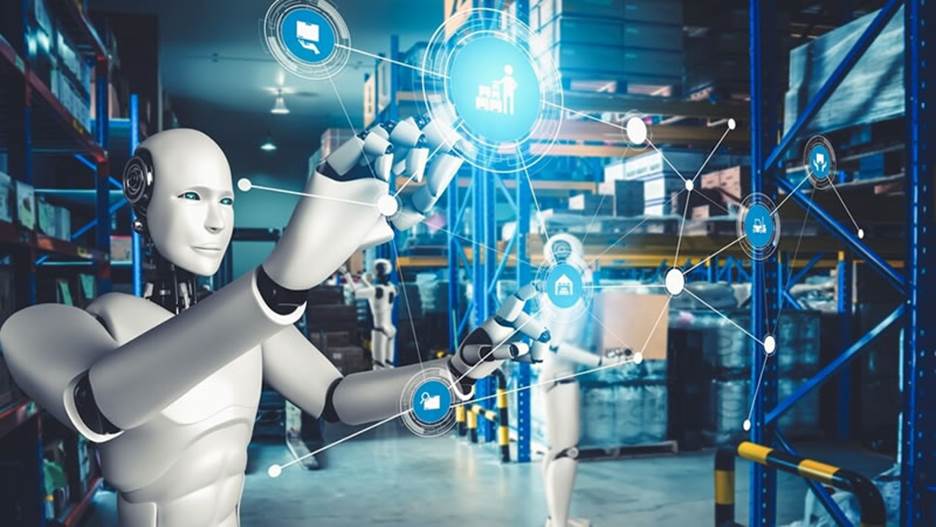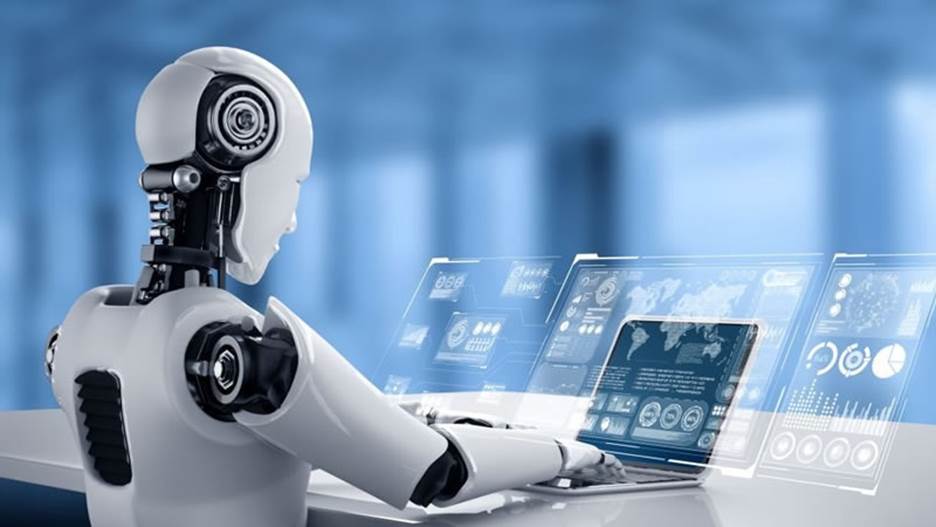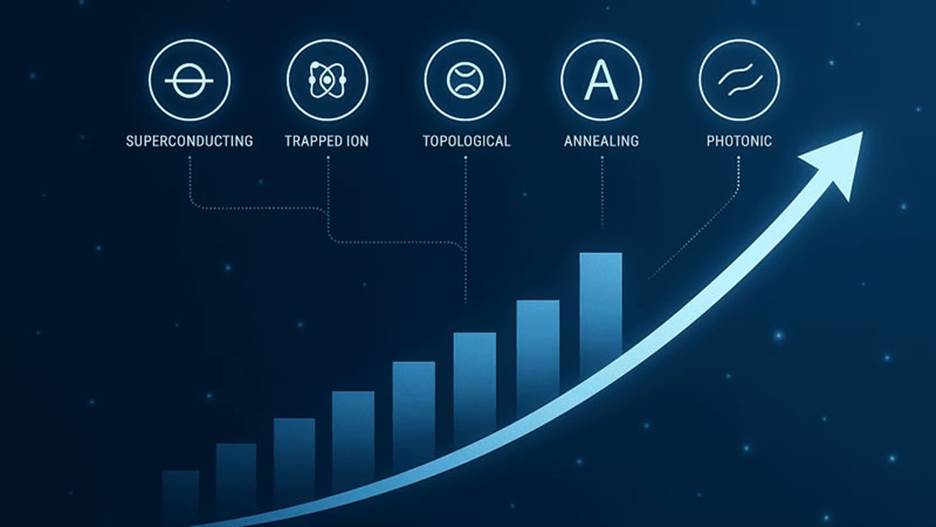Robotics has transformed from science fiction to the real world and today contributes to industry and our daily lives. From factory assembly lines to home vacuums using robots, the future of robots continues to unfold before our eyes. But in what direction? Let’s discover how industry and daily activities are changing through the power of robotics.

Understanding Robotics Today
Simply put, the Future of Robotics entails the development and deployment of robots that do tasks traditionally undertaken by human beings. Although the earliest robots merely handled repetitive tasks in the factory, robots nowadays complexly integrate machine learning and artificial intelligence and are hence getting intelligent and more flexible.
Industry robots already manage production lines, packing, and the supply chain. Meanwhile, household robots are expanding at a very rapid pace, and household items such as cleaning robots, personal assistants, and even robots impersonating pets are becoming commonplace.
Robotics in Industry
Industrial robots have radically transformed the way companies do business. Robots in manufacturing put together automobiles, electronics, and household items at unprecedented rates and accuracies. Automation and robots also perfect supply chains by sorting, packing, and delivering items.
Industry’s use of robots not only provides time savings but also provides added protection. Robots can do dangerous tasks such as welding and lifting, and work in dangerous settings, thus preserving men and women from getting hurt.
robotics in daily life
When most individuals hear the term “robots,” they envision factories, but robotics in household activities is gaining popularity at a very quick pace. Robotic vacuum cleaners and automatic mops make cleaning easier at home, and home assistants such as Alexa or Google Home marry Future of Robotics technology to smart home devices.
In the health industry, service robots help in patient monitoring, elderly care, and even surgery. Even education sees the increased adoption of robots as teaching aids, helping students link STEM subjects to fun and interesting activities.
Artificial Intelligence and Robotics
Robotic systems and artificial intelligence are intertwined. AI allows robots to learn, adapt, and make real-time decisions. For instance, autonomous vehicles employ AI to drive autonomously, while industrial robots employ machine learning to become more efficient in the long run.
Robots that are powered by artificial intelligence are not only restricted to pre-coded instructions anymore; they can scan environments, spot patterns, and adapt behavior. The future of technology for robots just got better.

Advantages of Robotics
The returns on robots are limitless:
- Efficiency: A robot may work faster and more accurately than a human.
- Safety: Hazardous occupations may be mechanized, preventing accidents.
- Consistency: Robots don’t get tired, ensuring high-quality results.
- Cost effectiveness: High cost at the beginning, long-term savings are significant.
Future of Robotics Technology
The future of robotics technology is bright. Important trends in robotics include:
- Autonomous vehicles: More advanced self-driving drones and vehicles are coming.
- Collaborative robots (cobots): Designed to work together with humans in companies.
- Robotic wearables: Exoskeletons to help patients and workers during transport.
These new technologies will bring robots into even more areas of our lives to ease tasks, enhance safety, and provide greater speed.
The Future of Robotic Process Automation (RPA)
Robotic process automation is the new industry in which digital robots automate routine digital tasks such as data entry, invoicing, and report generation. The future holds greater business efficiencies, lower rates of errors, and lower business expenses.
Most organizations already implement RPA in order to automate the process and let the employees do more innovative and strategic work.
Impact of Robotics on Employment
One of the most debated subjects when it comes to robots is how robots impact jobs. As feared as job loss may be, the effect of robots on jobs cannot be reduced. While jobs may be automated in some areas, new jobs in the areas of Future of Robotics engineering, programming for AI, and maintenance are also arising.
Workers will need to adapt by learning new skills. Instead of replacing humans, robotics will likely shift the job market toward higher-value roles requiring creativity and problem-solving.
Difficulties Faced by
Despite all the benefits, robotics faces challenges:
- Ethics: Issue of privacy, decision-making, and control.
- Cost: High-end robots are not affordable for most businesses yet.
- Security threats: Networking robots may be exposed to hacking.
These issues should be resolved as robots become increasingly a part of everyday life.
Robotic Applications in Medicine and Healthcare
Health care may be the most promising area for robots. Surgical robots assist doctors in performing delicate surgery, reducing risk and the amount of recovery time. Robots are even helping in geriatric care by offering companionship and physical support.
Apart from that, robots and drones can distribute supplies to remote locations and offer rapid and efficient health care delivery.
Learning and Education using Robotics
Robots are entering educational institutions as learning tools and getting children to learn concepts through interactions. Future of Robotics kits also get students to learn programming and engineering skills, and get them ready for the future of robots.
Teachers are helped by robotic assistants who help alleviate routine tasks and allow more time and contact with students.
The Future of Household Chores through Robotics
Robotic activities in daily life are going to be widespread. Picture kitchens where robots do the cooking, cleaning, and even entertaining. Restaurants and coffee shops already are using robotic chefs and servers.

Robots handling routine tasks in the years ahead will provide individuals with more time to focus on creativity, recreation, and self-enhancement.
The Long-Term Vision for Robotics
The far future holds the promise of spacecraft missions by robots that establish bases on Mars or on the Moon. Robots will collaborate with humans in many kinds of businesses, and home robots may become standard equipment such like smartphones today.
In 50 years, robots will be totally mainstreamed in society, and individuals can focus on innovation and emotional intelligence, something robots cannot easily be substituted for.
Conclusion
The future of robots in industry and everyday tasks promises much. Although there are setbacks, the benefits far outweigh the risks. From factory robots to home assistants, robots are bringing a world in which people and robots work together. It all comes down to acceptance and adaptation through skills and harnessing the technology for the good.
1. Will robots replace human beings in workplaces?
None at all. Robots will replace jobs that are routine in nature, yet robots and technologies will introduce jobs, too.
2. Where do robots operate in everyday life?
From smart assistants and self-propelled vacuums to health assistants, robots provide greater convenience and ease in life.
3. What is Robotic Process Automation?
RPAs involve the use of software robots to automate routine digital tasks such as reporting and data entry.
4. How does AI affect robotics?
Computing enables robots to learn, adapt, and make judgments, and such robots become more intelligent and able than ordinary machinery.
5. It possesses the following major advantages.
Efficiency, safety, accuracy, cost reduction measures, and reduced human workload are the key positives of robots.

